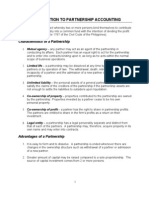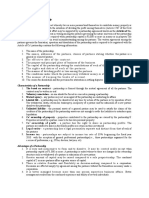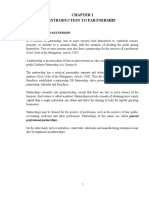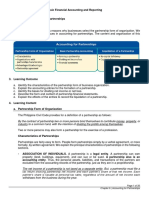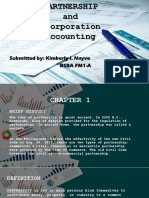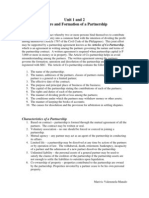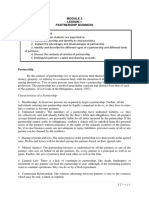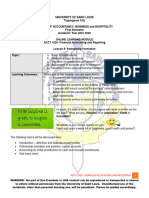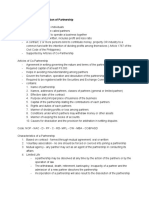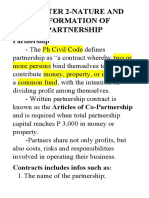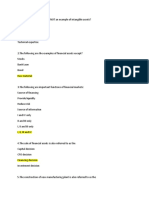0% found this document useful (0 votes)
6 views13 pagesModule 1 Acc
The document outlines the formation, characteristics, advantages, and disadvantages of business partnerships, emphasizing the tax benefits and legal distinctions from corporations. It details various types of partnerships, partners, and accounting features, as well as the necessary agreements and guidelines for recording partnership formation. Intended learning outcomes include understanding the nature of partnerships and how to account for partner contributions.
Uploaded by
Hazel MaalaCopyright
© © All Rights Reserved
We take content rights seriously. If you suspect this is your content, claim it here.
Available Formats
Download as PDF, TXT or read online on Scribd
0% found this document useful (0 votes)
6 views13 pagesModule 1 Acc
The document outlines the formation, characteristics, advantages, and disadvantages of business partnerships, emphasizing the tax benefits and legal distinctions from corporations. It details various types of partnerships, partners, and accounting features, as well as the necessary agreements and guidelines for recording partnership formation. Intended learning outcomes include understanding the nature of partnerships and how to account for partner contributions.
Uploaded by
Hazel MaalaCopyright
© © All Rights Reserved
We take content rights seriously. If you suspect this is your content, claim it here.
Available Formats
Download as PDF, TXT or read online on Scribd
/ 13

